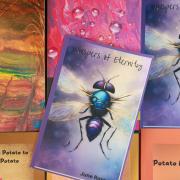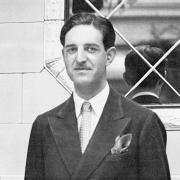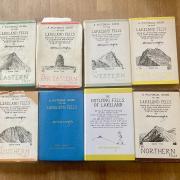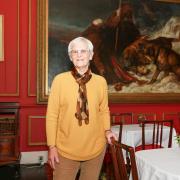Lancashire's Sir Mark Lennox-Boyd, a high-flying minister in the Thatcher government, is making light work of a new passion. Sue Riley reports Main photography by Darren Andrews
As a Foreign Office minister travelling the world and a member of Margaret Thatcher’s inner circle, Sir Mark Lennox-Boyd probably wished there had been more hours in the day.
Now he has retired from politics after serving as the MP for Morecambe, time is still much on his mind. But it’s not because he suddenly has too much of it.
Sir Mark is now able to indulge a passion for sundials, objects which have gone from essentials to garden ornaments. But this is no mere academic interest - he designs and sells them, working in partnership with a talented stonemason. He designed his first way back in the 70s but only recently has he been able to concentrate on a subject which fascinated him for years.
It has led to him writing an authoritative book on the subject, unsurprisingly called Sundials (published by Frances Lincoln) and creating 20 intricate examples which grace many gardens, including Holker Hall, Blackpool Pleasure Beach and the National Museum of Scotland.
‘I am quite good at mathematics and I know my geometry pretty well and I also like design,’ he says. ‘I had always been slightly interested, but since I have had time in recent years it’s become considerably more than that. I could not make a living out of it, though’ he said.
He designs each one, chooses the materials and works with the monumental mason to create them. Last year he finished two, the last selling for �19,000. That covers everything, including materials and the mason’s fee. A fraction goes to Sir Mark, who also creates smaller sundials which sell for �2,000-�3,000
.The biggest by far is at his home in Italy, Villa Meridiana. The house was built around a staircase that is actually a seven metre high sundial created by Sir Mark and decorated with a skyscape by his step-daughter Dominique. It is arguably the largest in the world.
His admiration for the artform of sundials has led to him becoming the patron of the British Sundial Society. ‘I am rather amazed that the former Astronomer Royal is the president and, as the patron, I am more important. I tease him about that!’
Sir Mark was born into the Guinness brewing dynasty, he studied at Eton and Oxford, became a barrister and was the MP for Morecambe from 1979-1997. His career as a Conservative politician saw him work as MrsThatcher’s private parliamentary secretary and he travelled widely as a Foreign Office minister.
Married to the award-winning and much admired garden designer Arabella Lennox-Boyd, the couple live at Gresgarth Hall set in 15 acres of beautifully landscaped gardens near Caton in north Lancashire.
At 67, Sir Mark still travels having recently returned from a 18-day tripto China where he and his wife and three botanists toured the Szechuan province looking at the local plant and tree life.
However, he still keeps in touch with local issues as President of Morecambe Conservative Association and he has campaigned against wind turbine developments in the Lune Valley.
‘I loved representing Morecambe. It was such a part of my life. I made some very close friends and I do what I can to help. I hope Morecambe can recover rather more. A lot has been done in public investment, but I fear its going to be difficult for it to be a major holiday centre again. It’s not as strong as it was,’ he said.
Sitting in Gresgarth Hall which he bought in 1978 when selected for the Morecambe constituency, he has a friendly demeanour and it’s easy to see why he charmed his electorate for so long.
Over the years he and his Italian-born wife Arabella have completely restored the hall - parts of which date back to 1500 - and its gardens. They also have a flat in London where he is part of a small group of loyal supporters who look after his former boss, Baroness Thatcher, who stayed at Gresgarth a few times when she was Prime Minister.
And the future? He plans to stay at Gresgarth. ‘We will stay here for the rest of our lives,’ he declares. And one day he plans to replace the sundial in the garden at Gresgarth,which was removed after being damaged some years ago. ‘I just didn’t replace it, but yes, I’ll have to,’ he says, sensing the irony of being the patron of the British Sundial Society and not having one of his own.
Fun and sundials
Sundials often contain inscriptions, often in the form of a memento mori, there to remind us of the transient nature of time - and the inevitability of death. One of the more famous is ‘Do not kill time, for it will surely kill you.’ Others are more light-hearted such as ‘I am a sundial and I make a botch of what is done much better by a watch.’ Another more practical example is: ‘I count only the sunny hours.’


























